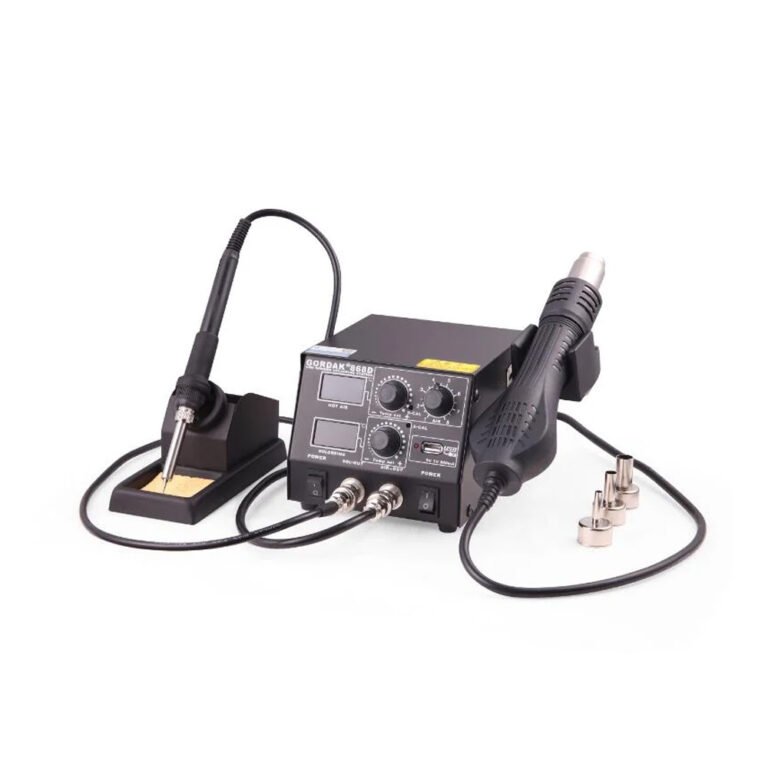Ball Grid Array (BGA) components are widely used in modern electronics due to their high pin count and compact size. However, repairing or replacing BGAs can be challenging because the solder balls are hidden underneath the component, making precise rework essential. This guide explains how to rework BGA components safely and effectively.
What Is BGA Rework?
BGA rework involves removing a faulty BGA chip from a PCB and replacing it with a new one while maintaining reliable electrical connections. Unlike traditional components, the solder joints are beneath the package, requiring specialized tools and techniques to avoid damage to the board or surrounding components.
Essential Tools for BGA Rework
- 热风返修站 – Provides precise temperature and airflow control to melt solder without damaging nearby parts.
- 焊接站 – Useful for minor touch-ups or pre-tinning pads.
- BGA Stencil and Solder Paste – For accurate solder ball placement when installing a new chip.
- Tweezers and Vacuum Pick-Up Tools – For handling components safely.
- Magnifying Tools or Microscope – Necessary for inspecting solder joints under the BGA.
- PCB 固定器或第三手工具 – Keeps the board stable during rework.
- ESD Protection – Wrist strap or mat to prevent electrostatic damage.

Step-by-Step BGA Rework Process
Step 1: Prepare the Workspace
- Work in a clean, well-lit, and ESD-safe environment.
- Gather all tools, replacement BGAs, and necessary materials.
Step 2: Preheat the PCB
- Preheating the PCB reduces thermal stress and helps avoid lifted pads.
- Use a hot plate or the hot air station to gradually heat the board to the recommended temperature.
Step 3: Remove the Faulty BGA
- Apply hot air evenly to the BGA until the solder balls melt.
- Carefully lift the component using tweezers or a vacuum pick-up tool.
Step 4: Clean the Pads
- Remove any remaining solder using solder wick or a solder sucker.
- Apply flux to the pads to improve solder wetting for the new component.
Step 5: Place the New BGA
- Align the new BGA accurately using tweezers or a pick-up tool.
- For fine-pitch BGAs, a stencil and solder paste may be required.
Step 6: Reflow the Solder
- Use the hot air rework station to reflow the solder balls evenly.
- Ensure proper temperature and airflow to achieve smooth, shiny joints.
Step 7: Inspect and Test
- Examine all solder joints with a microscope to detect bridges or cold joints.
- Test the circuit board for proper functionality after rework.
Tips for Successful BGA Rework
- Always use flux to improve solder flow and reduce oxidation.
- Work gradually, heating evenly to prevent board warping or component damage.
- Practice on scrap boards to improve your technique before handling critical components.
- Avoid excessive heat to preserve the integrity of the PCB and neighboring parts.
关于 GORDAK
Gordak 是领先的焊接和返修设备制造商,为全球电子专业人士提供优质、可靠和创新的工具。凭借 30 多年的行业经验,Gordak 将先进技术、精确温度控制和 ESD 安全设计相结合,满足 SMD 和通孔焊接应用的需求。Gordak 致力于追求卓越,提供经济实惠的解决方案、快速响应的客户支持以及深受全球客户信赖的产品。



